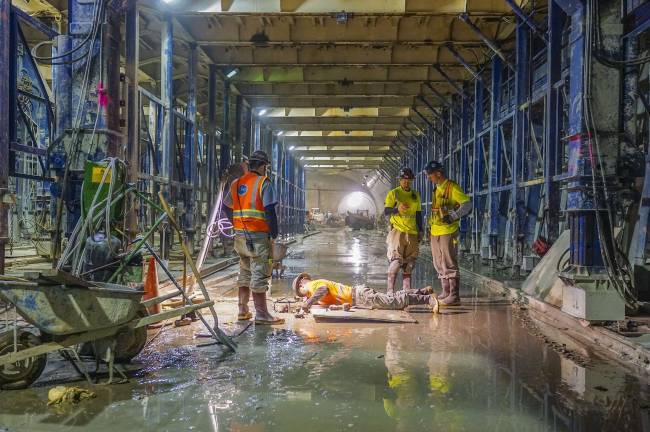One Last Stop on the second avenue line News

After years of sidewalk closings, traffic congestion, and project setbacks, Phase 1 of the Second Avenue Subway is finally set to open in December after landing an additional $66 million from the MTA.
The agency’s Transit and Bus Committee approved a proposal to accelerate the work of four contracts by requesting use of the additional money out of its contingency fund.
East side officials hailed the move, which will mean the completion of a project that already has cost $4.4 billion.
“I am pleased that the MTA is taking the steps needed to ensure the on-time completion of Phase 1 of the Second Avenue Subway,” said Congresswoman Carolyn B. Maloney. “This project is incredibly important to New Yorkers, as the Lexington Avenue line is currently the most congested in the nation and is in desperate need of relief. I am very much looking forward to my first ride come December 2016.”
Maloney has made building the line her top priority, and has been persistent in campaigning that Phase 1 is completed by December 2016. Phase 1 extends the Q train from its current terminal at 57th Street and 7th Avenue to the new 96th Street and 2nd Avenue Station. New subway stations will be located at 72nd St., 86th St., and 96th St., along 2nd avenue, and the Lexington Avenue and 63rd Street station will be redone.
The first proposal for the Second Avenue Subway was introduced in 1929. It wasn’t until April 2007 when the groundbreaking at the 96th Street Station finally took place.
The completion of the first phase is set to help alleviate overcrowding on 4,5,and 6 trains between 103rd St and 63rd St, and provide easier travel between the Upper East Side and the west side of Manhattan. Service will continue into Brooklyn via the existing Q train.
“It will decrease crowding on the adjacent Lexington Avenue Line by as much as 13%, or 23,500 fewer riders on an average weekday. It will also reduce travel times by up to 10 minutes or more for those on the far east side or those traveling from the east side to west midtown”, said MTA spokesman Kevin Ortiz.
The line stretches 8.5 miles along the Upper East Side, from 125th Street in Harlem to Hanover Square in Lower Manhattan. A total of 16 new stations will be built serving several communities including, Harlem, the Upper East Side, Lower Manhattan, East Village, amongst more.
“MTA has stepped up and become involved in disseminating information to the community and is addressing issues on an ongoing bases”, said Barry Schneider, co-chair of the Second Avenue Subway Taskforce, which was created in 2004. Schneider says that the MTA publishes newsletters quarterly to update the community on the progress of the work. He also mentioned the MTA’s Second Subway Community Information Center located on 2nd Avenue, a facility offering exhibits and programming on the history and construction of the Second Avenue Subway.
“This taskforce addresses all issues involving the project development and construction of the subway”, said Schneider. The taskforce has seven members, and meets approximately four times a year to discuss new developments in the process. Other community members are welcome to attend these meeting as well.
Councilmember Ben Kallos remembers being a staff member when ground broke in 2007, and he expresses an interest in not only the trouble that the subway construction has caused residents, but also the businesses that have suffered because of it.
“It’s amazing that nine years later, we will have the subway. At the time we did what we could to support local businesses and finally everyone’s commute will get better and the businesses that made it through the investment will see their businesses restored”, said Kallos.
After Phase 1 of the project is operational, it is anticipated that workers will be able to continue working on Phase 2 of the station, which will extend from 96th to 125th street.
“Phase 2 will stretch north and west from Second Avenue and E. 96th Street to Lexington Avenue and E. 125th St., and includes three new stations at 106th Street, 116th Street, and 125th and Lexington Avenue”, said Ortiz.
“Work will not stop. We fear that if we stop it will never continue again”, said Kallos. “I’m looking forward to taking the subway to work every morning and Coney Island for a weekend trip.”